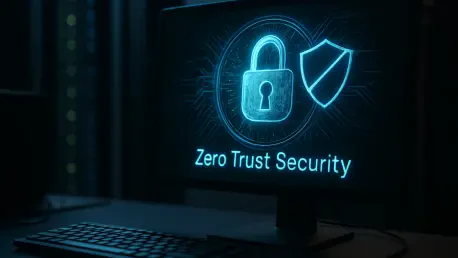The changing landscape of cybersecurity presents new challenges for industries, especially those relying heavily on intricate systems and networks. An alarming rise in cyber threats has pushed organizations toward more secure strategies, with Zero Trust Cybersecurity emerging as a potent solution. This model shifts the focus from traditional perimeter defenses to a comprehensive approach that insists, “never trust, always verify.” In this review, we delve into the core principles and components of Zero Trust Cybersecurity, its latest developments, and the challenges it faces.
Core Principles and Components of Zero Trust
Zero Trust Cybersecurity is a paradigm shift in how organizations manage security, emphasizing “never trust, always verify” as its inalienable principle. At the core of Zero Trust are identity verification, least privilege access, and continuous monitoring, creating a framework designed to protect against increasingly sophisticated cyber threats. This approach has gained relevance due to the evolving threat landscape, where traditional security models often fall short.
Identity and Access Management (IAM)
Identity and Access Management plays an essential role in Zero Trust by verifying the identity of users and devices seeking to access a network. IAM enhances security by imposing stringent verification processes, ensuring that only authenticated entities gain access. With technological advancements, performance metrics in IAM are improving, contributing to faster authentication speeds and a more seamless user experience. The integration of robust IAM systems into Zero Trust frameworks illustrates their critical role in bolstering organizational security.
Network Segmentation and Microsegmentation
Network segmentation, another pivotal component of Zero Trust, involves dividing networks into smaller, isolated sections to prevent unrestricted lateral movement by potential attackers. Microsegmentation further refines this approach, providing granular access controls within each segment. In practice, this entails implementing technical features such as firewalls and software-defined perimeters. The performance improvements and additional security provided by segmentation have been successfully demonstrated in various real-world applications, offering enhanced data protection.
Recent Developments in Zero Trust
Recent innovations in Zero Trust frameworks incorporate advanced technologies like AI and machine learning, significantly improving threat detection and response. Enterprises are increasingly embracing these technologies to enhance their Zero Trust strategies, evident in shifts toward policy changes and behavior adaptations aligned with Zero Trust principles. The rapid deployment of AI-driven Zero Trust solutions underscores the need to stay ahead of evolving cyber threats and build resilient security postures.
Real-World Applications Across Industries
Zero Trust Cybersecurity is increasingly adopted across diverse industries, including finance, healthcare, and manufacturing, each leveraging its robust security mechanisms to protect sensitive data and operations. Unique use cases include securing remote workforces and safeguarding critical infrastructure, illustrating the versatile applicability of Zero Trust. By employing these security models, industries ensure they remain resilient against cyber threats while maintaining operational integrity.
Challenges and Limitations
Despite its advantages, Zero Trust faces significant challenges, particularly in implementation complexity and integrating with existing legacy systems. Technical hurdles often arise, requiring organizations to balance new security measures with operational demands. Additionally, regulatory changes and market dynamics influence the pace and extent of Zero Trust adoption. Addressing these challenges necessitates a strategic approach, including proactive adaptation and overcoming barriers to widespread implementation.
Future Outlook for Zero Trust
As Zero Trust continues to evolve, anticipated advancements and innovations promise to enhance its efficacy in cybersecurity strategies. Future developments will likely see improved integration capabilities and more sophisticated analytics, paving the way for more targeted security measures. The long-term impact of Zero Trust on cybersecurity practices will likely redefine industry standards, shifting focus toward comprehensive, trust-based strategies.
Conclusion
The comprehensive review of Zero Trust Cybersecurity reveals its significant role in modern cybersecurity strategies, offering substantial protection against complex cyber threats. While challenges in implementation and integration persist, ongoing advancements in technology promise to enhance its efficacy. As organizations continue to recognize the importance of this model, Zero Trust is anticipated to play an integral role in shaping the future of cybersecurity, fostering a safer digital landscape for industries worldwide.









